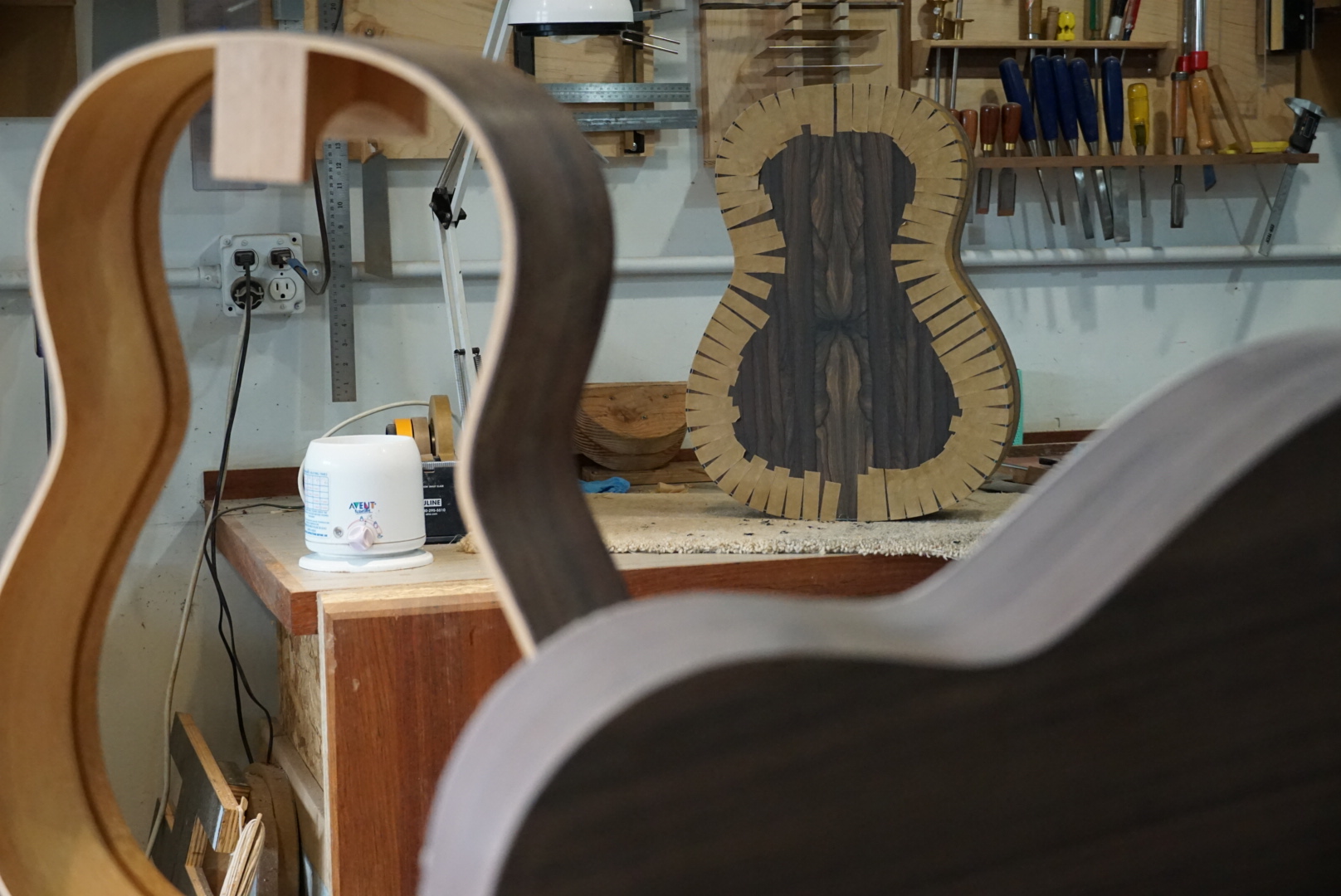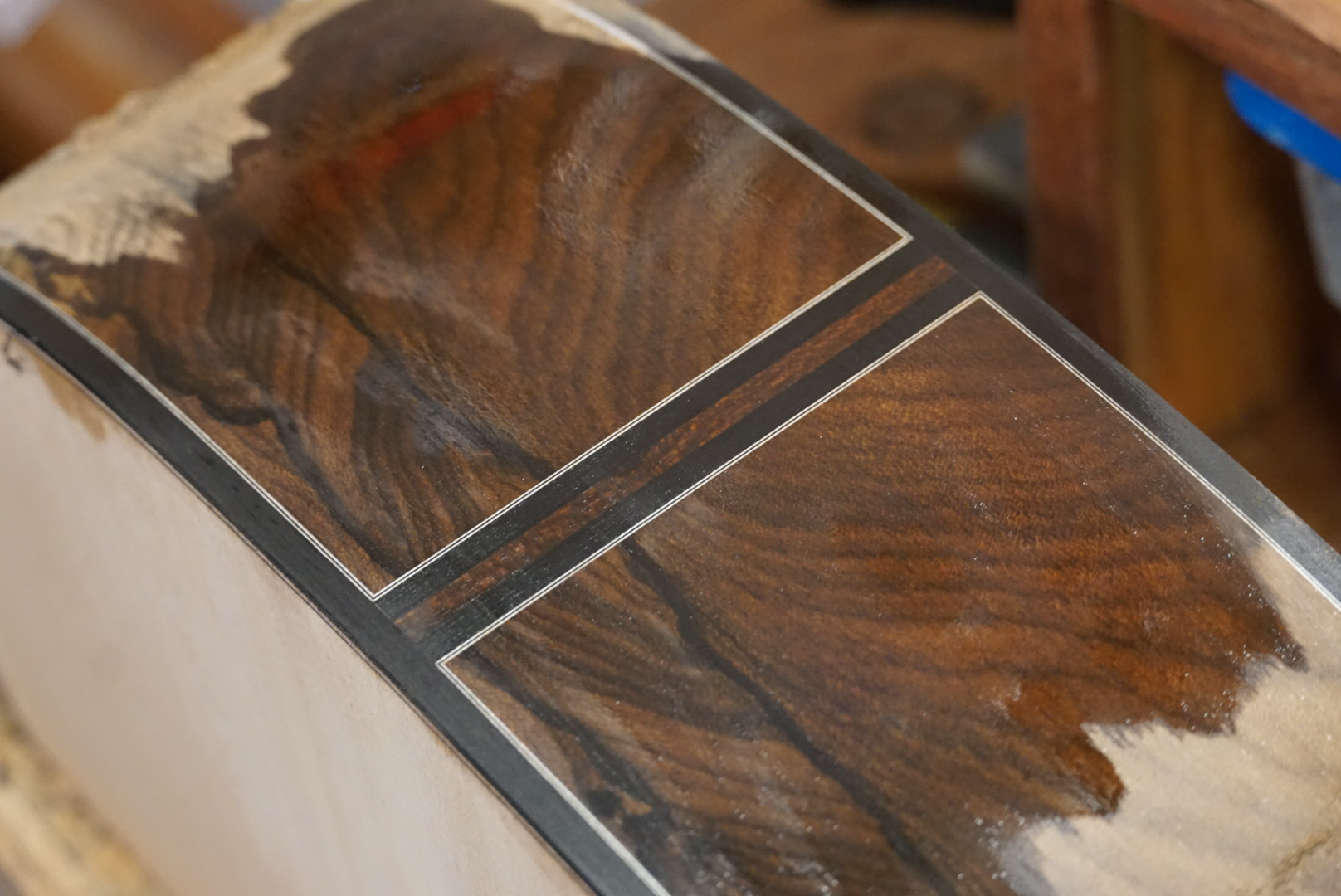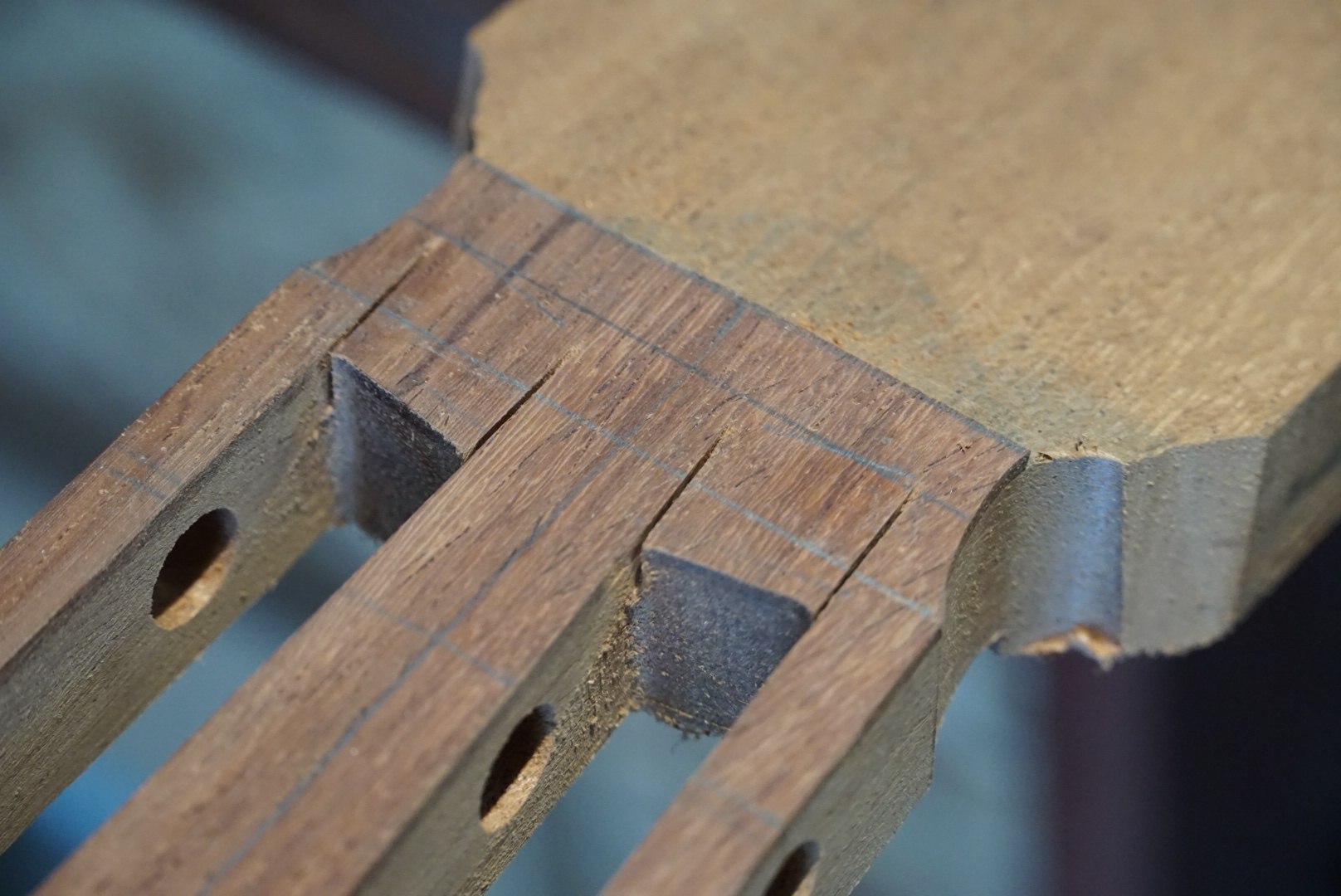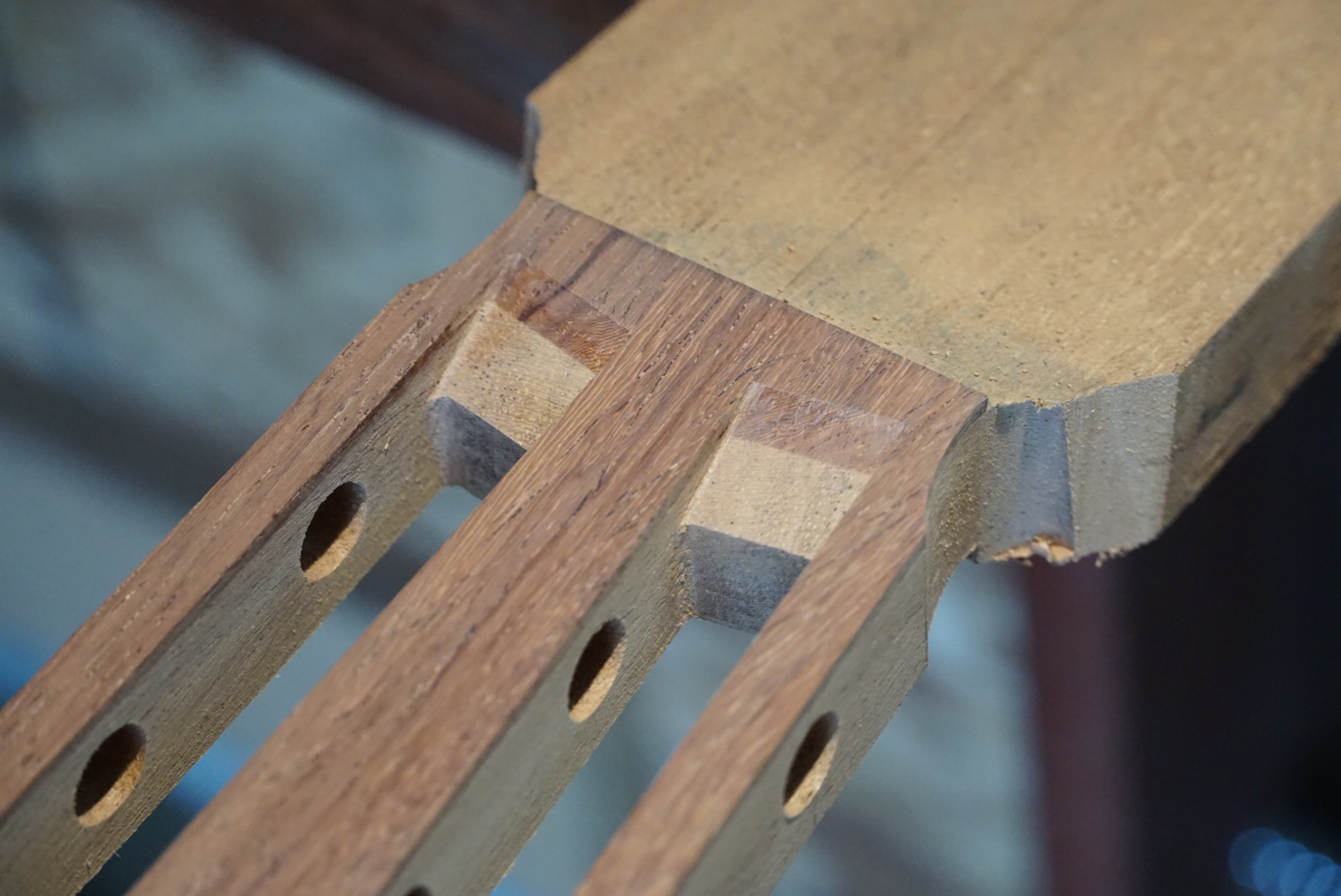Teaching is something that I haven’t done much of lately. I used to help teach a continuing education class where students ended up with a finished tenor ukulele. It was fun but more about rudimentary and basic woodworking experience for the students. Just recently, I was contacted by another luthier, who is primarily an arch top guitar builder, wanting to get started building classicals. His range of experience building arch tops is so far from the world of classical guitar that he felt he wanted some help. He wanted to consult with me and brace a guitar top in my signature style. I was a bit apprehensive at first but eventually agreed after a few emails back and forth. He flew in and we ended up having a really great time.
Bracing a top is fun, but more important to getting a handle on building classical guitars was the time we spent tuning two finished guitar bodies and a third partially assembled one as well as evaluating some of the raw materials. Showing him how I tuned the finished guitars was informative for him but talking through the process with him really helped to crystallize it for me as well. I’m usually just “doing it” by myself. It’s another thing to talk about it an explain the “why”.
Like I said, bracing a top is fun but its just one element. The interaction of the resonances of the top, back and internal air resonance are critical to voicing the guitar in a way that produces a guitar with volume, an even response across the range and is pleasing and musical. I usually just tap the guitar to get the specific frequencies but it was fun to throw some tea leaves on the plates and break out a speaker and tone generator to more dramatically demonstrate the modes of resonance. We also got to do the measurements on a guitar with the back off to demonstrate how much the interactions change once you close the box.
We did some basic analysis of the raw materials as well, which isn’t so critical to the makers of heavily built amplified instruments but immensely important on acoustic flat top instruments and especially classicals with the lower string tensions. Calculating the density and doing a simple deflection test is usually enough for me. It mostly confirms what your hands and ears are telling you. I do these tests because I start to doubt my gut and memory and the testing just makes me feel like I can trust my ears again.
Anyway, I was honored to think that someone would see me as any kind of expert and seek out my advice. I am always just making and stopping to talk about it was a different kind of experience. I think I will remain open to the possibility of doing some teaching in the future.
PS: I didn’t take any pictures during this consult so here are a few random construction photos of some guitars I’m working on right now.







